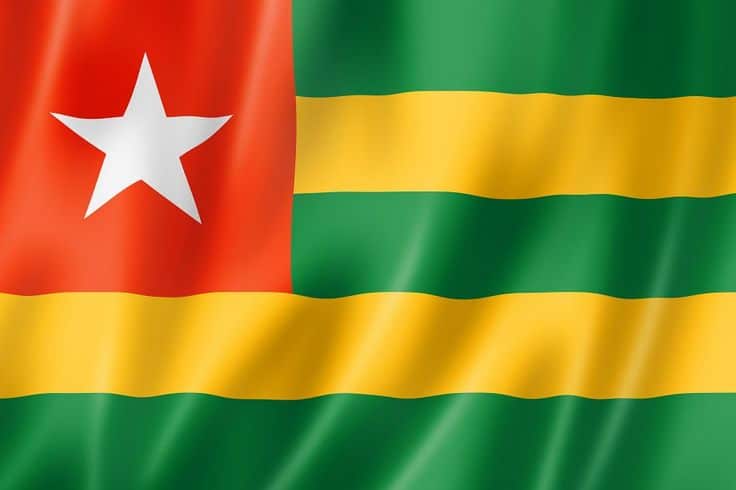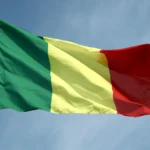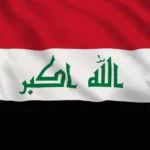
Nestled in the vibrant tapestry of West Africa, Togo is a nation that captivates with its rich history, diverse culture, and a resilient spirit. From its picturesque coastline along the Gulf of Guinea to the lush landscapes of Mount Agou, Togo unfolds as a mosaic of geographical wonders. With a population of approximately 8.9 million, Togo’s dynamic demographic contributes to its unique blend of traditions and contemporary aspirations. As we delve into the trivia that defines this West African gem, we discover a nation striving for progress, overcoming challenges, and celebrating the cultural treasures that make Togo truly distinct. Join us on a journey through the heart of Togo, exploring its past, present, and the promising future it envisions for its people.
Location and Size: Togo, nestled in West Africa, shares borders with Ghana to the west, Benin to the north, and Burkina Faso to the north. Its Gulf of Guinea coastline spans 56 km, providing a strategic maritime presence. The nation covers 56,785 sq km, comprising diverse landscapes from coastal plains to central hills.
Population: As of 2023, Togo’s estimated population stands at approximately 8.9 million. This demographic diversity contributes to the nation’s rich cultural tapestry and influences its economic and social dynamics.
Capital City: Lomé, the beating heart of Togo, serves as both the capital and largest city. Home to over 1.5 million people, Lomé is a bustling hub where modernity blends with historic remnants, offering a glimpse into the nation’s past and future.
Independence: Togo gained sovereignty from French colonial rule on April 27, 1960, marking a pivotal moment in its history. The struggle for independence shaped Togo’s identity and set the stage for its subsequent political, economic, and social development.
Official Language: Reflecting its colonial history, French is Togo’s official language. However, the linguistic landscape is diverse, with numerous indigenous languages, with Ewe being the most widely spoken, fostering cultural richness.
Highest Point: Mount Agou, situated in the country’s west-central region, towers at 986 meters above sea level. This geographic feature not only offers breathtaking views but also influences Togo’s climate and biodiversity.
Longest River: The Mono River, winding along Togo’s border with Benin, stretches approximately 467 km. Beyond its geographical significance, the river plays a crucial role in shaping ecosystems and supporting communities along its course.
Largest Lake: Lake Togo, sprawling in the southwest near Lomé, covers around 500 sq km. Its ecological importance extends to fisheries, tourism, and environmental balance.
First President: Sylvanus Olympio, Togo’s inaugural post-independence president, faced the challenges of nation-building. Tragically, his term was cut short by assassination in 1963, leaving an indelible mark on Togo’s political history.
Longest-Serving President: Gnassingbé Eyadéma’s 38-year presidency, from 1967 to 2005, deeply influenced Togo. His legacy, though controversial, shaped the nation’s political landscape, leaving a lasting impact on its governance and stability.
Life Expectancy: Togo’s life expectancy, averaging around 64 years for men and 68 years for women as of 2023, reflects the nation’s healthcare, living conditions, and overall well-being. Initiatives aimed at improving healthcare access and quality contribute to these figures, outlining ongoing efforts to enhance the populace’s health.
Monetary Unit: The CFA franc (XOF), shared with other West African countries, serves as Togo’s official currency. Its stability and regional acceptance underline the economic collaboration within the West African Economic and Monetary Union.
Largest Ethnic Group: The Ewe people, constituting approximately 32% of Togo’s population, play a pivotal role in shaping the nation’s cultural identity. Their traditions, language, and social practices contribute significantly to Togo’s diverse heritage.
Main Religion: Christianity holds a predominant presence in Togo, followed by Islam and traditional African religions. This religious diversity mirrors the nation’s historical interactions and cultural syncretism.
Literacy Rate: Togo’s adult literacy rate, standing at around 79% as of 2020, showcases the nation’s commitment to education. Efforts to enhance literacy contribute to socio-economic development and empower the population.
Cash Crop: Cocoa emerges as a crucial cash crop for Togo, ranking as the world’s 12th largest producer in 2021. The cultivation and export of cocoa contribute significantly to Togo’s agricultural sector and global market presence.
Exports: Togo’s export portfolio includes cotton, phosphates, coffee, and cocoa beans. This diverse range of commodities reflects the nation’s economic activities and its role in global trade.
Unique Wildlife: The Togo blind snake, a diminutive species measuring only around 8.5 cm in length, stands out as one of the smallest snakes globally. Its endemic nature underscores Togo’s biodiversity and the importance of conservation efforts.
UNESCO World Heritage Site: Koutammakou, a UNESCO World Heritage Site in northern Togo, showcases the cultural significance of traditional mud houses built by the Batammariba people. This designation emphasizes Togo’s commitment to preserving its unique cultural heritage.
Football (Soccer): Football, particularly soccer, enjoys immense popularity in Togo. The national team, known as “Les Éperviers” (The Hawks), participating in the Africa Cup of Nations eight times, symbolizes the nation’s sporting prowess and unity through the love of the game.
Music and Dance: Togo boasts a rich musical and dance tradition, with diverse styles and instruments unique to different regions. Agbadja, a vibrant dance mainly performed by women, stands out as a popular cultural expression, showcasing the nation’s artistic vibrancy and community bonds.
National Flag: Togo’s national flag is a symbol of unity and identity. Comprising five horizontal stripes of green, yellow, red, white, and red, with a white star in the center of the red canton, it reflects the nation’s history, values, and aspirations.
Climate: Togo experiences a tropical savanna climate with distinct seasons. A hot and dry season spans from November to March, while a warm and wet season prevails from April to October. Understanding the climate is crucial for agriculture and daily life, shaping the nation’s routines and economic activities.
Challenges: Togo faces several challenges, including poverty, insufficient infrastructure development, and political instability. Acknowledging and addressing these challenges is crucial for the nation’s sustainable development and the well-being of its citizens.
Looking Ahead: Despite its challenges, Togo is determined to pursue economic development and social progress. The nation aspires to improve the lives of its citizens, and ongoing initiatives signal a commitment to overcoming obstacles and creating a brighter future for Togo. The resilience and determination of the Togolese people shape the narrative of progress and hope for the nation.
Frequently Asked Questions about Togo:
Why is Togo called the saddest country?
There isn’t a single official designation of Togo as the “saddest country.” However, the country faces various challenges, including poverty, lack of infrastructure development, and political instability, which can contribute to negative perceptions. It’s important to avoid generalizations and simplistic narratives about entire countries and their people.
What was Togo famous for?
Togo is known for several things, including:
Rich cultural heritage: Diverse ethnic groups with unique traditions, music, and dance forms like Agbadja.
Historical significance: As a former French colony and the first sub-Saharan African country to declare independence in the 20th century.
Natural beauty: Scenic coastline, mountains like Mount Agou, and Lake Togo, the largest lake in the country.
Agricultural products: Significant cash crops like cocoa (12th largest global producer in 2021) and coffee.
Is Togo a rich or poor country?
According to the World Bank, Togo is classified as a low-income country. While economic growth is on the rise, Togo still faces significant challenges like poverty, with a large portion of the population living below the national poverty line.
It’s important to remember that a country’s wealth is not solely defined by economic indicators. Togo also boasts rich cultural heritage, natural beauty, and resilient people.
Why did Germany want Togo?
Several factors motivated Germany to colonize Togo in the late 19th century, as part of the broader scramble for African territories during the colonial era. Here are some key reasons:
- Resources: While Togo lacked major mineral resources discovered later, the potential for agricultural development, particularly palm oil production, attracted German interest.
- Strategic Location: Togo’s location on the Gulf of Guinea offered a foothold for establishing trade routes and expanding German influence in West Africa. It also served as a potential gateway to the interior of the continent.
- Prestige and Competition: European powers like Germany actively participated in the colonial race, driven by a desire for increased global prestige and economic power. Acquiring colonies was seen as a mark of national strength and dominance.
- Military and Naval Base: Germany aimed to establish a strategic military and naval base in West Africa to support its growing naval ambitions and potentially secure trade routes.
- Missionary Activity: German missionaries were already active in Togo before colonization, and the German government saw an opportunity to expand its religious and cultural influence through colonial control.
It’s important to note that the colonization of Togo had devastating consequences for the local population, including:
Loss of land and resources: Traditional social structures and livelihoods were disrupted as German authorities seized land and imposed forced labor for resource extraction.
Exploitation and oppression: Indigenous people faced exploitation through forced labor, discriminatory practices, and suppression of cultural practices.
Long-lasting legacy: The colonial era’s social, economic, and political consequences continue to shape Togo’s development today.
While understanding the historical context of German ambitions for Togo is essential, it’s crucial to remember that colonialism was a deeply exploitative and harmful practice with lasting negative impacts on colonized societies.









